© 2025 MJH Life Sciences™ , Patient Care Online – Primary Care News and Clinical Resources. All rights reserved.
The "Sweet Spot" in Type 2 Diabetes Management
The new "sweet spot" in diabetes management is the interdisciplinary approach that is essential to treating all aspects of the disease. New diabetes medications also hit that spot.
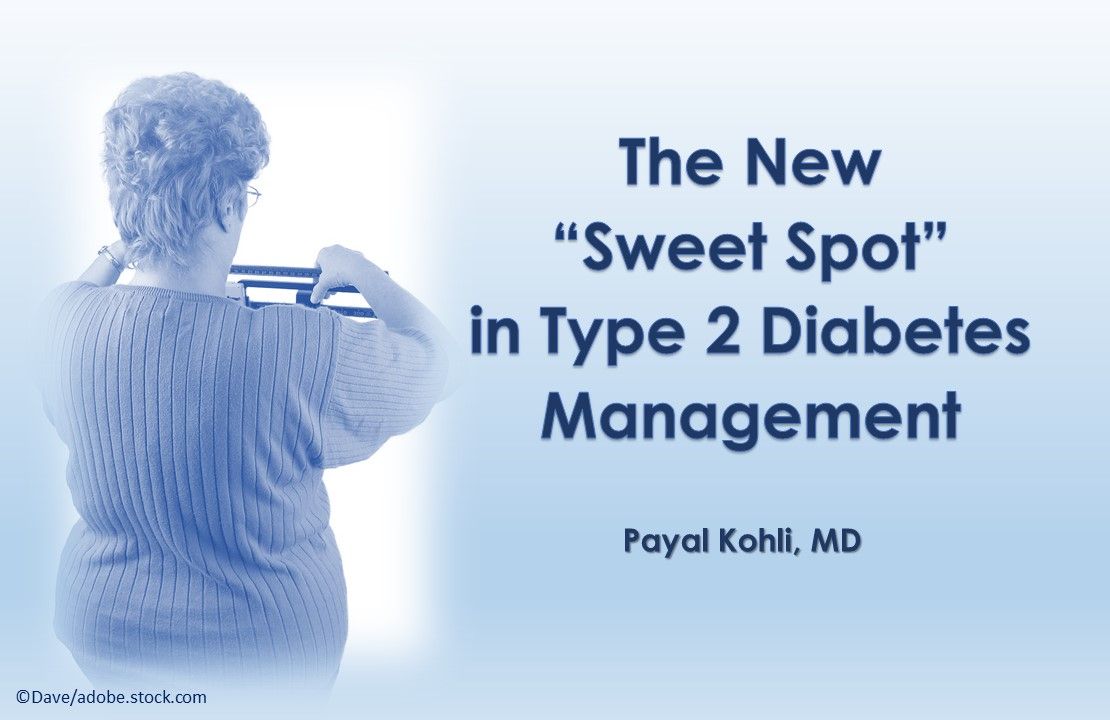
The new "sweet spot" in diabetes management is the interdisciplinary approach that is essential to treating all aspects of the disease. Newer diabetes medications also hit that spot.
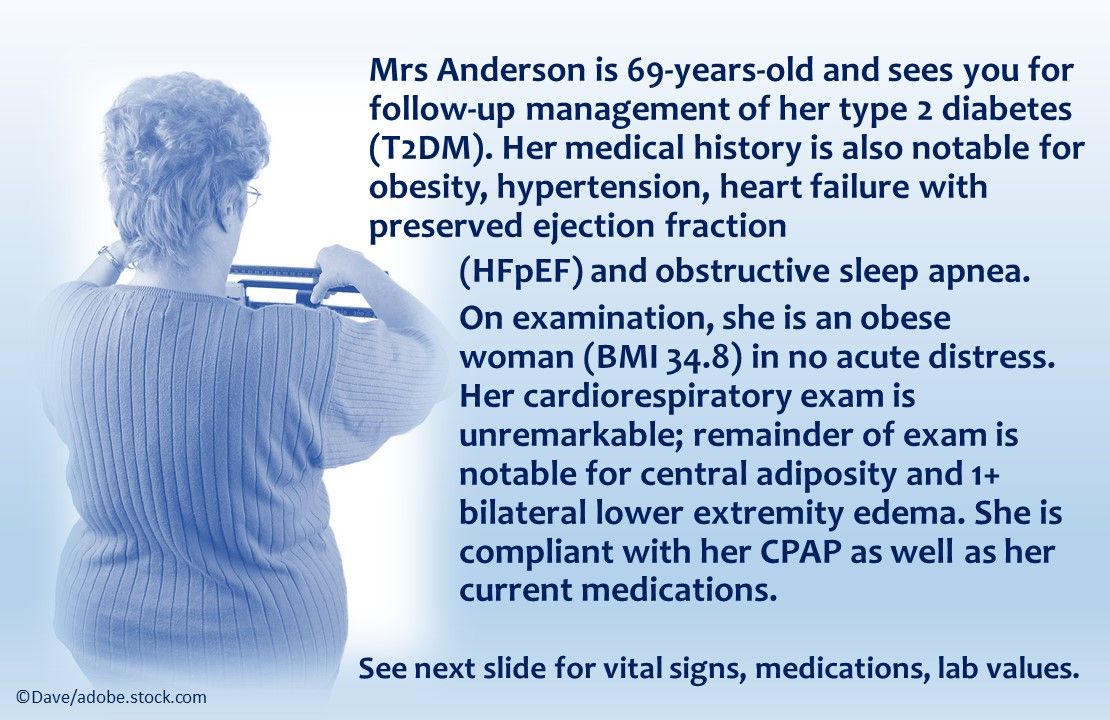
Mrs Anderson is 69-years-old and sees you for follow-up management of T2DM. Her medical history is also notable for obesity, hypertension, HFpEF and OSA. She is in no acute distress. Remainder of exam is unremarkable other central adiposity and 1+ bilateral lower extremity edema. She is compliant with her CPAP as well as her current medications.
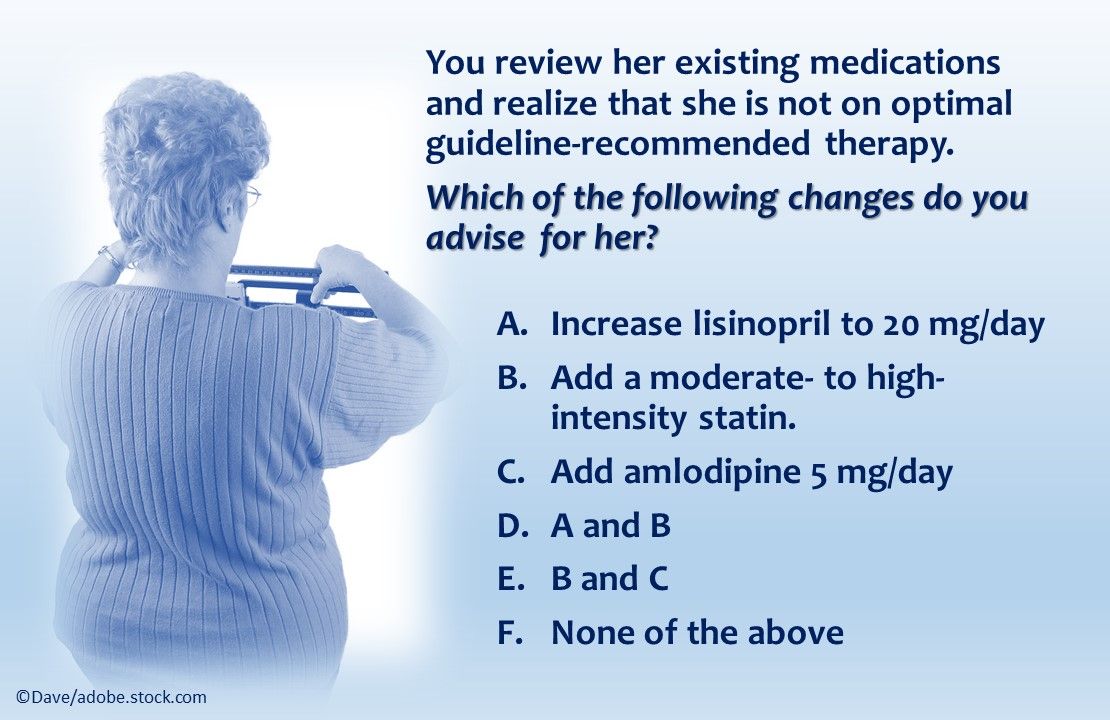
After a review of her current medications you realize that she is not on optimal guideline-recommended therapy. Which of the changes above do you advise for her?
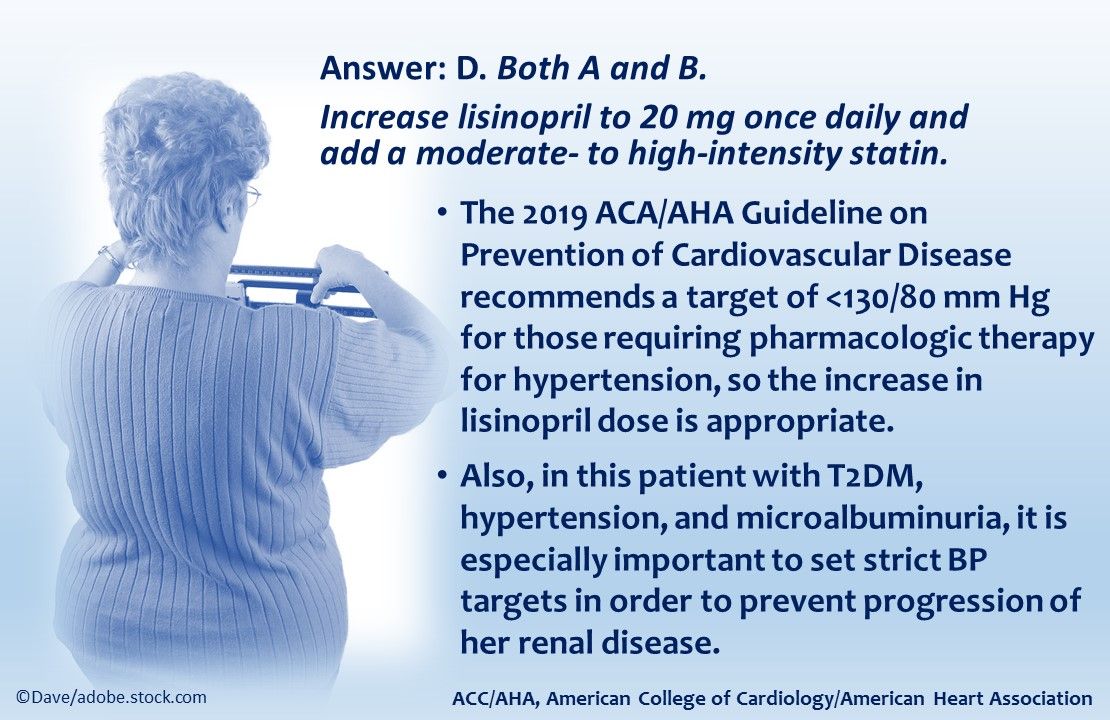
Answer: D. Both A and B. Increase lisinopril to 20 mg once daily and add a moderate- to high-intensity statin. The 2019 ACA/AHA CVD prevention guidelines recommend BP <130/80 mm Hg for those requiring medication for hypertension. Meeting strict BP targets will also help prevent progression of renal disease.
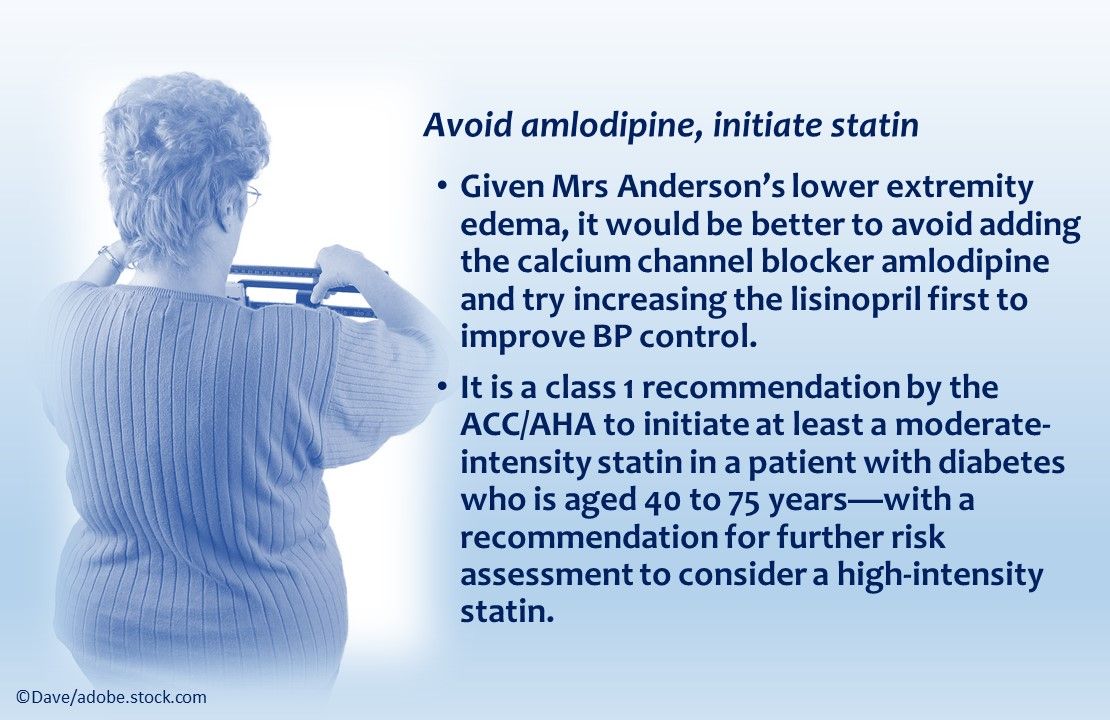
Avoid amlodipine, initiate statin. Given Mrs Anderson’s lower extremity edema, it would be better to increase lisinopril before adding a CCB. It is a class 1 recommendation by the ACC/AHA to initiate at least a moderate-intensity statin in a patient with diabetes who is aged 40 to 75 years-with a recommendation for further risk assessment to consider a high-intensity statin.
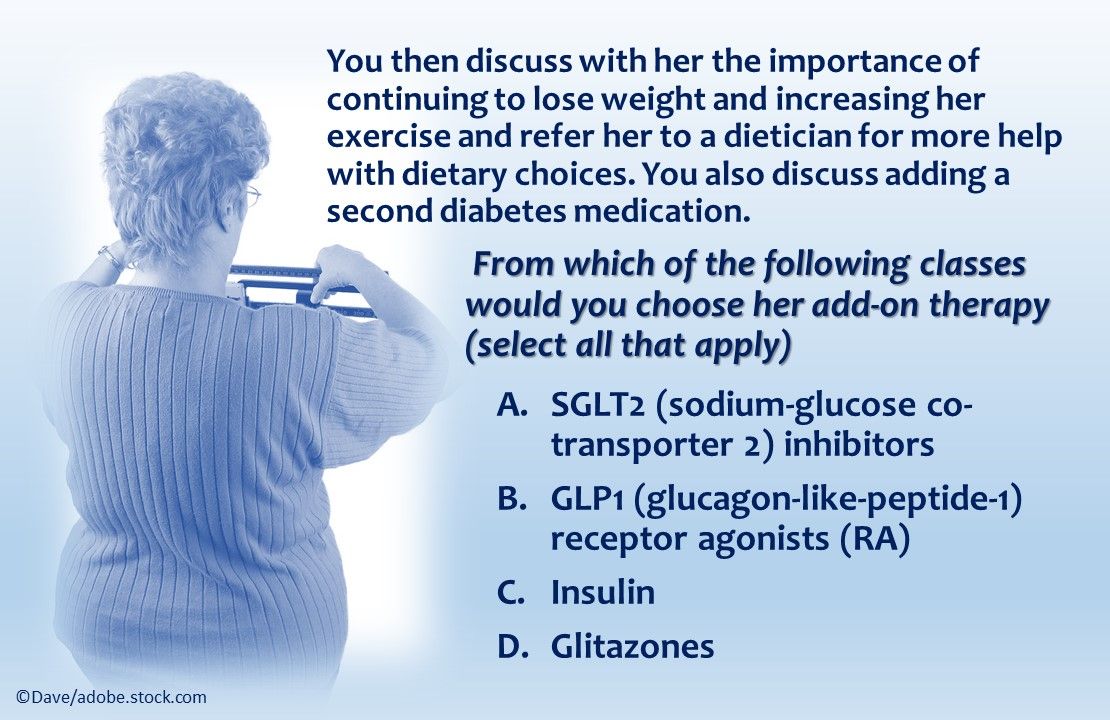
You discuss with Mrs Anderson the importance of further weight reduction and increased exercise; you refer her to a dietician for help with food choices. Then you discuss adding a second diabetes agent. From which of the classes above would you choose her add-on therapy? (Select all that apply)
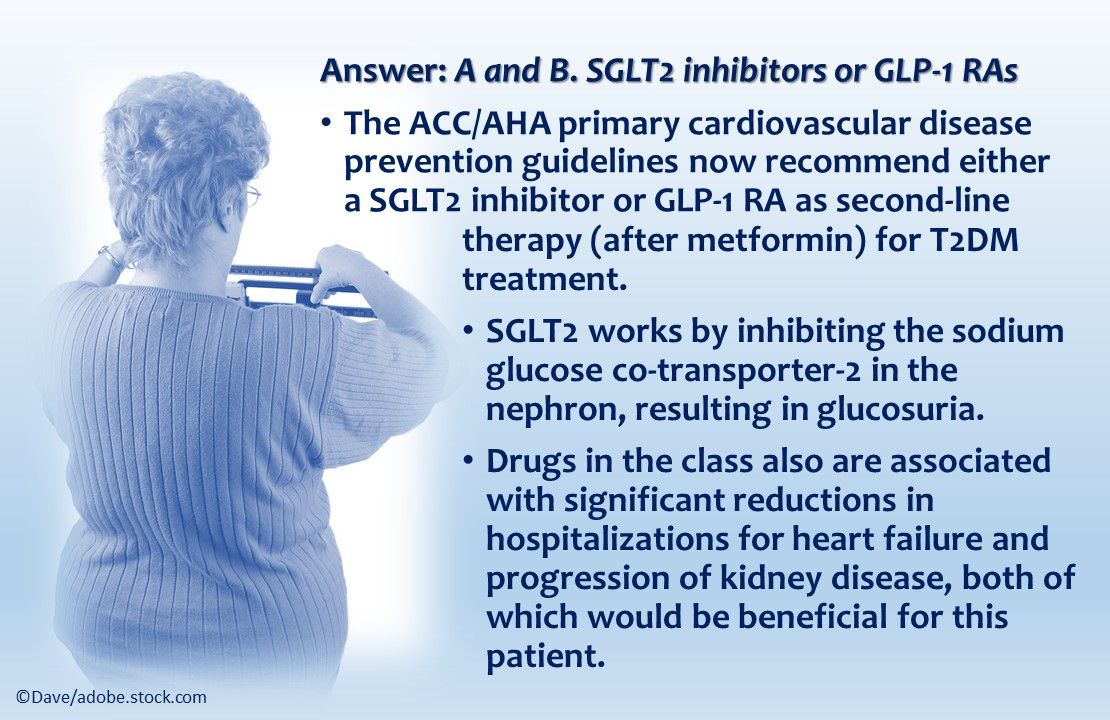
Answer: A and B. SGLT2 inhibitors or GLP-1 RAs. The ACC/AHA primary cardiovascular disease prevention guidelines now recommend either a SGLT2 inhibitor or GLP-1 RA as second-line therapy added to metformin. SGLT2 inhibitors have been show to reduce HF hospitalizations and progression of renal disease.
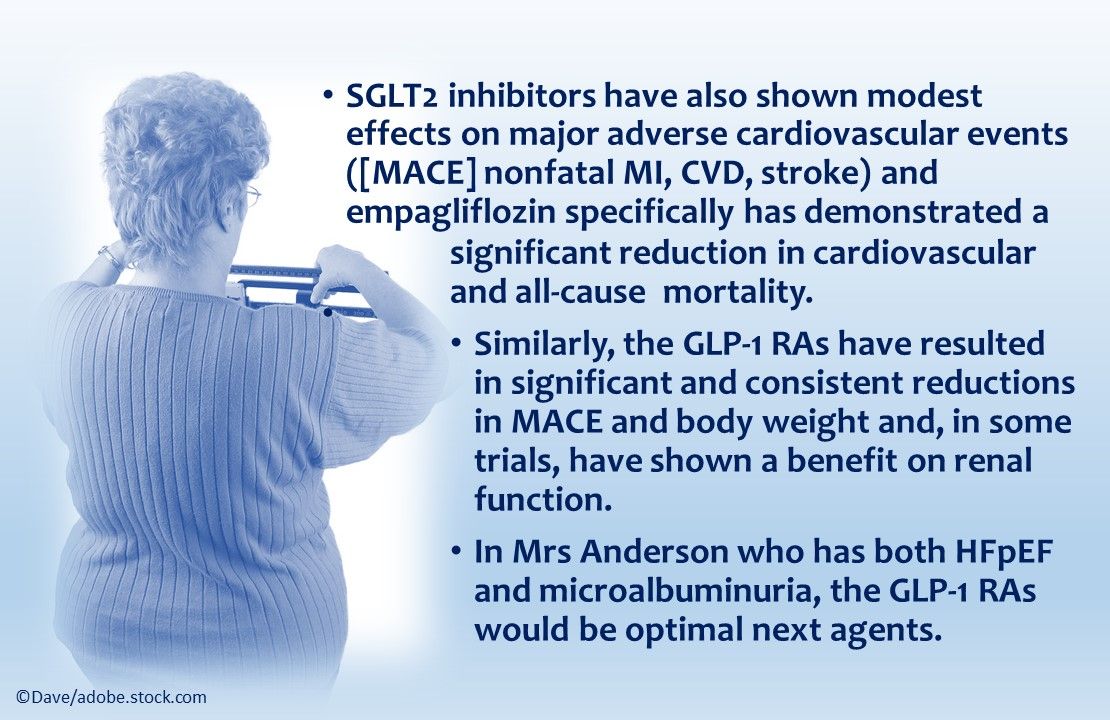
Both the SGLT-2 inhibitors and GLP-1 RAs have shown cardioprotective benefits with the latter proving more robust; the GLP-1 RAs also are associated with reduction in body weight and, in some trials, with improved renal function.
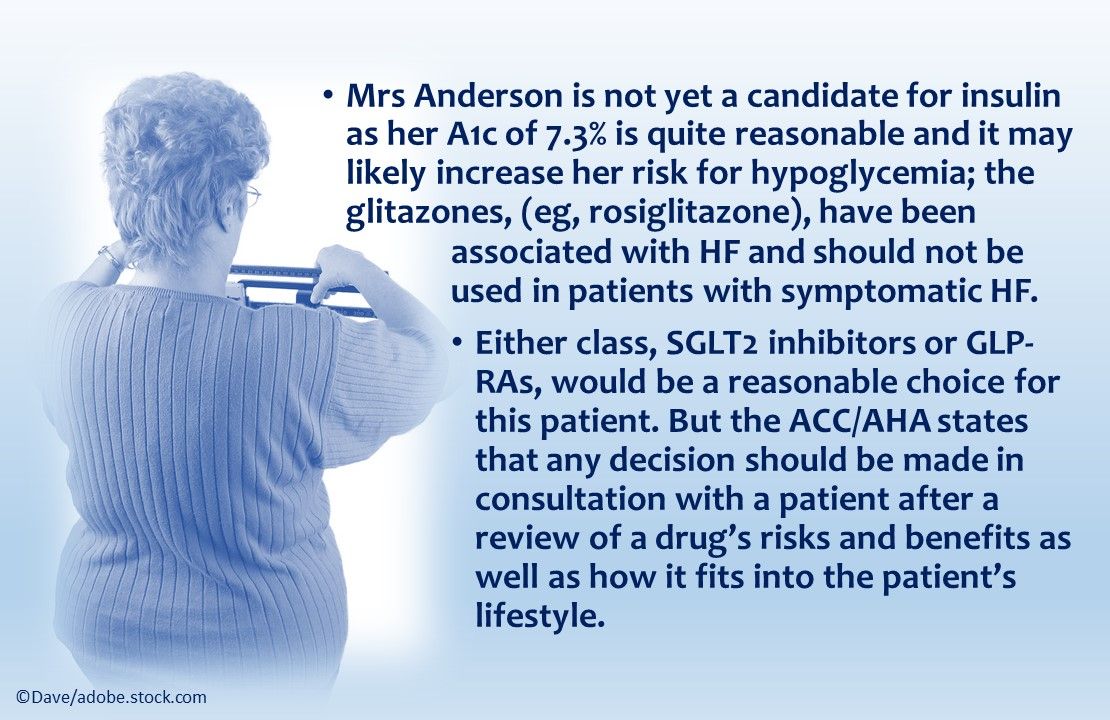
Mrs Anderson is not yet a candidate for insulin as her A1c of 7.3% is quite reasonable and it may likely increase her risk for hypoglycemia; the glitazones, (eg, rosiglitazone), have been linked with HF. Either SGLT2 inhibitors or GLP-RAs would be a reasonable choice for this patient. But shared decision making is central to ACC/AHA guidance on CV primary prevention strategies.
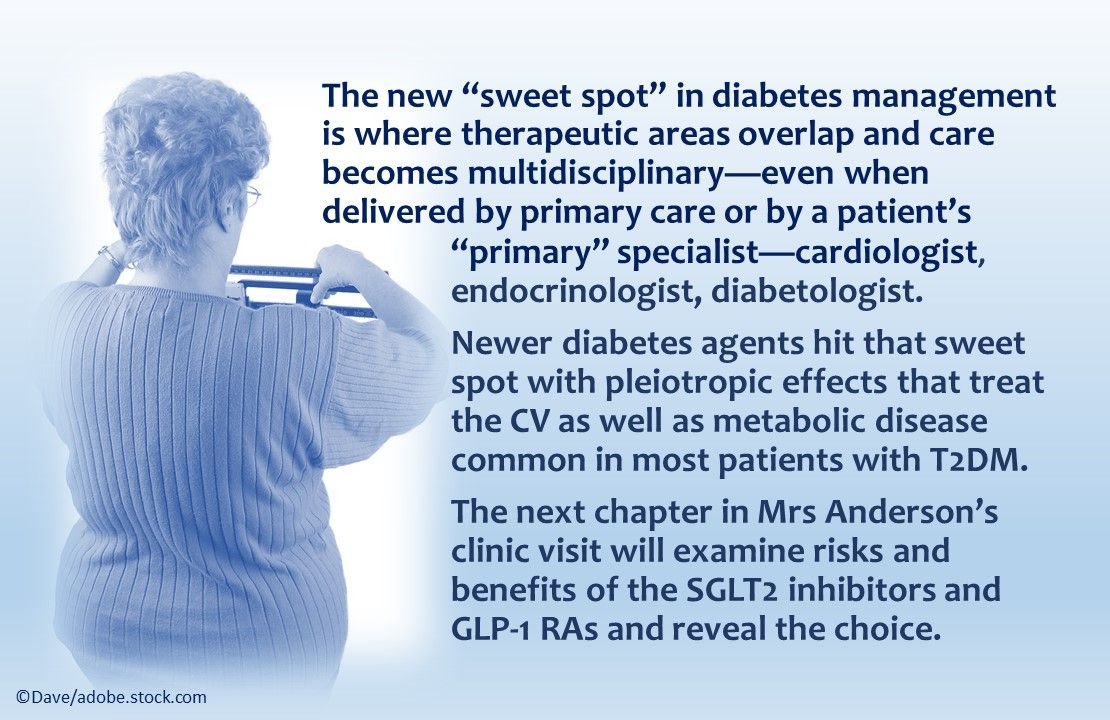
The new “sweet spot” in diabetes management is where therapeutic areas overlap and care becomes multidisciplinary-whether delivered in primary care or by a cardiologist, endocrinologist, diabetologist. Newer diabetes agents hit that sweet spot with pleiotropic effects that treat the CV as well as metabolic disease common in most patients with T2DM. The next chapter in Mrs Anderson’s clinic visit will examine risks and benefits of the SGLT2 inhibitors and GLP-1 RAs and reveal the treatment choice.




